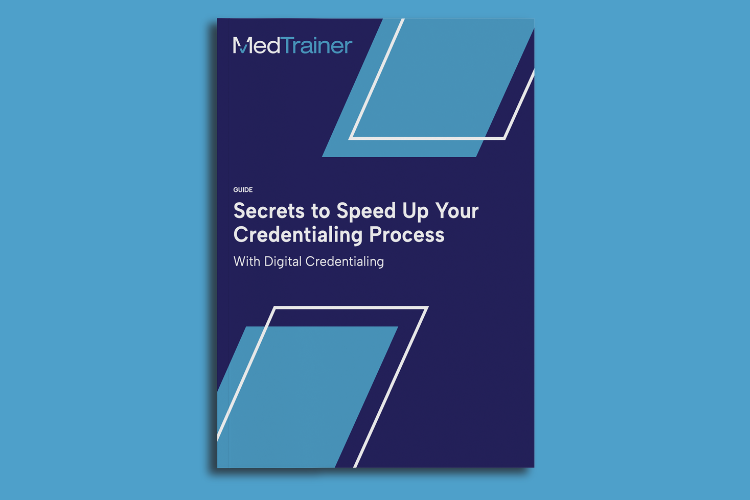Healthcare facilities must complete medical credentialing to verify a healthcare provider’s qualifications before employment. This comprehensive process authenticates a provider’s education, experience, and competency to deliver quality, safe patient care. Although medical credentialing is lengthy and quite complex, it’s required by law. Let’s review some key information that’s verified during credentialing and discuss examples of what could happen without medical credentialing.
Key Information Medical Credentialing Verifies
Most people think of healthcare providers as physicians, physician assistants, and other advanced practice professionals. Many other licensed healthcare providers must be credentialed: nurses, physical therapists, speech pathologists, and behavioral health therapists.
Regardless of profession, the credentialing process is fundamentally the same. First, the provider submits their information to the requesting organization to begin the process. The healthcare employer then conducts primary source verification to verify the information’s accuracy and legitimacy straight from the source. For example, a healthcare organization verifies a provider’s state license by calling or searching the state license registration board. Some key information to confirm during the medical credentialing process includes:
- Personal Information: Social Security Number, driver’s license, street address, and other relevant data for employment.
- Licensure: May include medical and state licenses, a Drug Enforcement Administration (DEA) license, and State Controlled Substance registration, if applicable.
- Certifications: Medical board certificates, fellowships, and residencies, when applicable. BLS/ACLS certifications status.
- Education: Can include transcripts, clinical rotation hours, graduation date, and degree earned.
- Work History: Verify past positions with employers, dates of employment, and practice locations. Review relevant to gaps in employment history.
Additional required data may include professional and personal references, a National Provider Identifier (NPI) number, immunization records, and case logs. The information a credentialer needs to validate may vary by state regulation, healthcare organization, and insurance company requirements. Credentialing requirements can also vary slightly per profession. For example, physical therapists provide their personal information, state licenses, and basic life support (BLS) certification. However, they don’t need a DEA or State Controlled Substance registration since they won’t prescribe medications or controlled substances.
7 Examples of What Could Happen Without Medical Credentialing
Medical credentialing validates a provider’s legal qualifications to practice within their approved scope. Here are some examples of possible issues that could arise without credentialing:
- Lack of healthcare standards: Without medical credentialing, there’s a lack of minimal provider standards and qualifications. For example, a physician wouldn’t have to receive a doctorate to practice medicine but instead may earn only a bachelor’s degree. Thus, medical credentialing provides minimal standards for a healthcare provider to practice within their approved scope.
- Unable to bill for services: Medical credentialing verifies a provider’s competency and confirms their ability to bill for services provided. Since most providers don’t want to work for free, they will be sure only to perform services for which they can bill, thus reducing the chances that a neurosurgeon would perform heart surgery.
- Inability to receive reimbursement: Insurance companies and government payers require medical credentialing to authenticate a provider’s qualifications to practice. Without verifying qualifications, healthcare organizations won’t receive reimbursement for patient care services from insurance or government payers.
- Introduces liability: Medical credentialing helps to confirm a provider’s legitimacy to practice and deliver quality outcomes. Without it, healthcare companies are subject to potential lawsuits for medical malpractice, negligence, and others.
- Promotes unsafe practices: Healthcare providers must have the qualifications and training to deliver safe patient care. If a healthcare provider’s competency isn’t reviewed, they pose potential patient safety issues. This can lead to patient misdiagnosis, medical errors, and other mistakes.
- Loss of trust: Patients trust healthcare organizations to confirm a provider’s qualifications. If an employer neglects to complete medical credentialing and a lawsuit arises because of it, the organization will lose patient, community, and industry trust.
Promote Proactivity Through Medical Credentialing
Medical credentialing is tedious and time-consuming, but after seeing what could happen without medical credentialing, hopefully, you realize it is literally a lifesaver. Using credentialing software can help to reduce the workload and help to speed up the process. Platforms like MedTrainer offer comprehensive provider profiles for all documentation, proven workflows for privileging and payer enrollment, and the data you need to maximize your process.

